#New York Zoological Society
Text

Centipede
By: New York Zoological Society
From: Natural History Magazine
1953
#centipede#myriapod#arthropod#invertebrate#1953#1950s#New York Zoological Society#Natural History Magazine
2K notes
·
View notes
Text



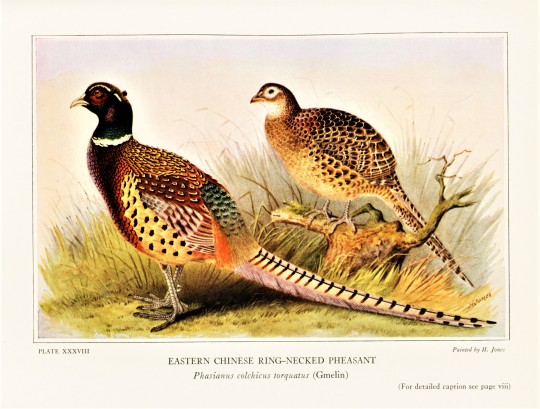

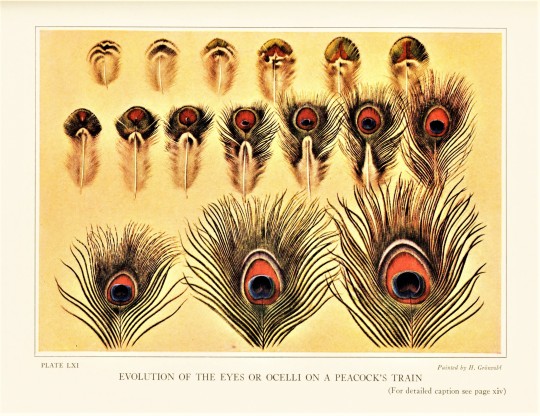



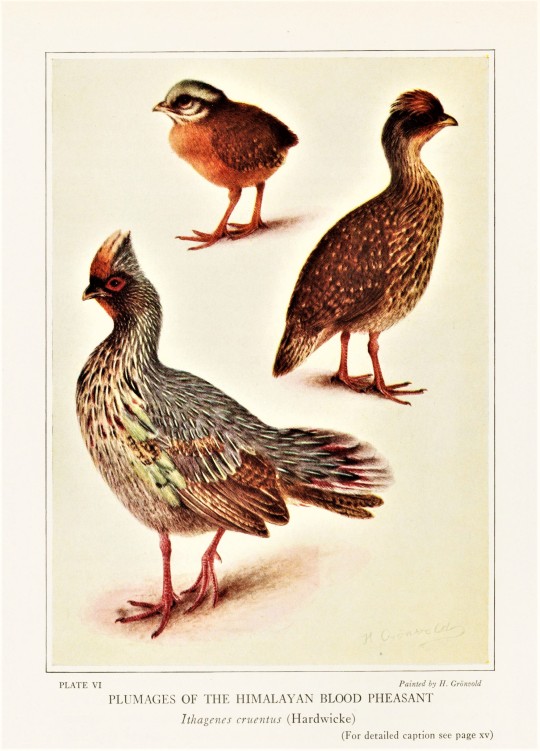
Feathursday Pheasants!
This week we bring you a few Pheasants from around the world as published in the 1936 publication Pheasants Their Lives and Homes by the eminent zoologist and explorer William Beebe, published in Garden City, N.Y. by Doubleday, Duran & Company under the auspices of the New York Zoological Society, where Beebe was director of the Department of Tropical Research.
In 1910, Beebe led a major, 17-month, worldwide expedition for the New York Zoological Society to document the world's pheasants. "The urgency of this journey sprang from the fact that the members of this most beautiful and remarkable group of birds are rapidly becoming extinct, so that the record of their habits and surroundings, which is important to understanding their structure and evolution, will soon be lost forever."
The resulting publication was the 4-volume A Monograph of the Pheasants, published in London by H. F. Witherby for the New York Zoological Society, 1918-1922. The abridged version, Pheasants Their Lives and Homes, first came out in 1926. This is the 1936 edition. The images shown here are by naturalist artists Louis Agassiz Fuertes, Henrik Grønvold, Henry Jones, Charles R. Knight, and George Edward Lodge.
View more posts with pheasants.
View more Feathursday posts.
#feathursday#pheasants#Pheasants Their Lives and Homes#William Beebe#Doubleday#Duran & Company#New York Zoological Society#bird paintings#scientific illustrations#Louis Agassiz Fuertes#Henrik Grønvold#Henry Jones#Charles R. Knight#George Edward Lodge#wildlife artists#birds#birbs!
125 notes
·
View notes
Text


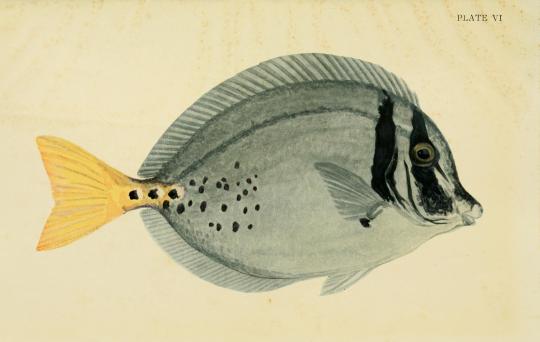

#FishyFriday Part 1: Isabel Cooper's color plates for Arcturus adventure: an account of the New York Zoological Society's first oceanographic expedition (1926): inside cover; Plate IV; Plate VI; Fig. 64 photo of her painting from a live specimen! (See individual photos for ID details)
More on Isabel Cooper [Mahaffee] (1892-1984), staff artist for the New York Zoological Association (now Wildlife Conservation Society) who participated in multiple research expeditions: https://en.wikipedia.org/wiki/Isabel_Cooper_(artist)
[Book digitized by Biodiversity Heritage Library]
#fish#fish in art#book illustration#scientific illustration#ichthyology#New York Zoological Society#Wildlife Conservation Society#Isabel Cooper#Arcturus#marine biology#20th century#animals in art#Fishy Friday
32 notes
·
View notes
Text
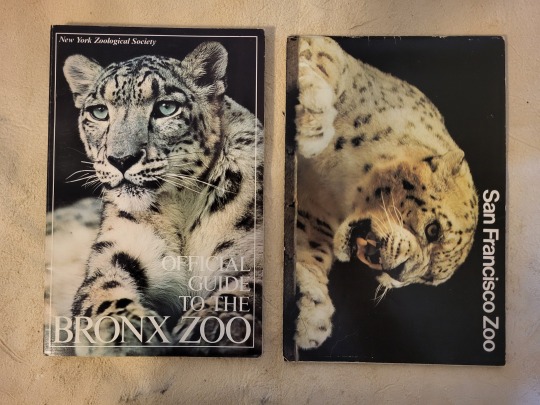
Official Guide to the Bronx Zoo, from the New York Zoological Society, 1980
San Fransisco Zoo, from the San Fransisco Zoological Society
#books#my library#official guide to the bronx zoo#new york zoological society#1980#1980s#san fransisco zoo#san fransisco zoological society#no published/copyright year on that one >:V#zoo guide#guide book#zoo book
1 note
·
View note
Text

The Arcturus Adventure: an Account of the New York Zoological Society's First Oceanographic Expedition. Written by William Beebe. 1926.
Internet Archive
974 notes
·
View notes
Text

A chimpanzee seated at a typewriter
New York Zoological Society
circa May 19, 1906
64 notes
·
View notes
Photo
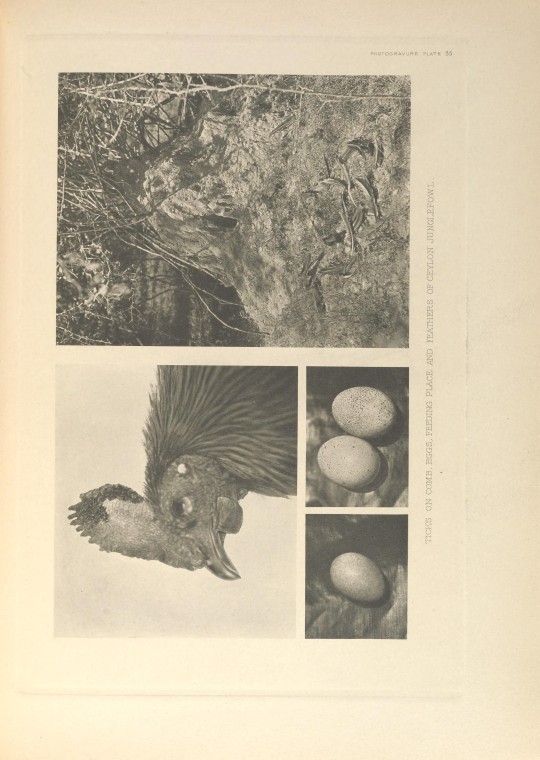
🐍 A monograph of the pheasants London, England: Published under the auspices of the New York Zoological Society by Witherby & Co., 1918-1922.
7 notes
·
View notes
Photo

Weighing Pandora the baby panda at the Bronx Zoo, 1938. The man holding the panda is Herbert J. Knobloch. From the New York Zoological Society Building, 1939-40 World's Fair.
Photo: NYPL
#New York#NYC#vintage New York#1930s#panda#Bronx Zoo#Bronx#zoo#Herbert J. Knobloch#World's Fair#scale#animals#weighing animals
98 notes
·
View notes
Text
A Turtle's Life
"We strolled up to Hunter College the other evening for a meeting of the New York Zoological Society. Saw movies of grizzly cubs, learned the four methods of locomotion of snakes, and were told that the Society has established a turtle blood bank. Medical men, it seems, are interested in turtle blood, because turtles don't suffer from arteriosclerosis in old age. The doctors are wondering whether there is some special property of turtle blood that prevents the arteries from hardening. It could be, of course. But there is also the possibility that a turtle's blood vessels stay in nice shape because of the way turtles conduct their lives. Turtles rarely pass up a chance to relax in the sun on a partly submerged log. No two turtles ever lunched together with the idea of promoting anything. No turtle ever went around complaining that there is no profit in book publishing except from the subsidiary rights. Turtles do not work day and night to perfect explosive devices that wipe out Pacific islands and eventually render turtles sterile. Turtles never use the word 'implementation' or the phrases 'hard core' and 'in the last analysis.' No turtle ever rang another turtle back on the phone. In the last analysis, a turtle, although lacking know-how, knows how to live. A turtle, by its admirable habits, gets to the hard core of life. That may be why its arteries are so soft."
E. B. White, 1953, via The New Yorker
9 notes
·
View notes
Text
Paintings of deep-sea creatures by German-born American artist Else Bostelmann (1882–1961).
In 1929, Else Winkler von Röder Bostelmann joined the New York Zoological Society in order to paint the marine life encountered by William Beebe during his bathysphere oceanographic expeditions at Bermuda's Nonsuch Island.
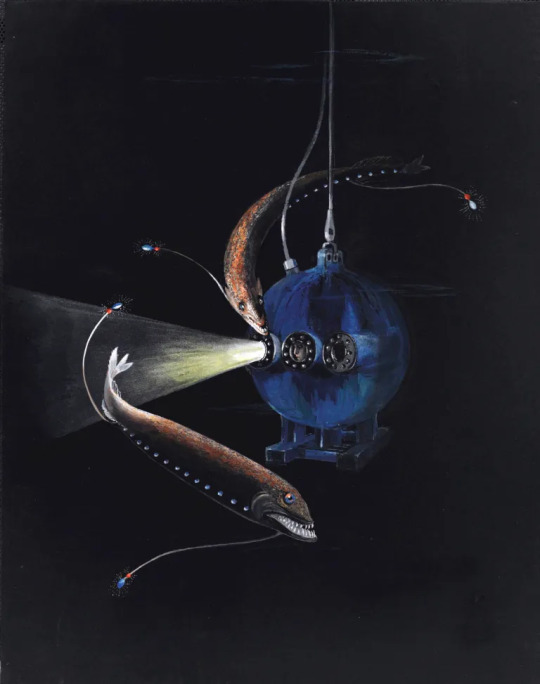
Giant dragonfish (Bathysphaera intacta) circling the bathysphere
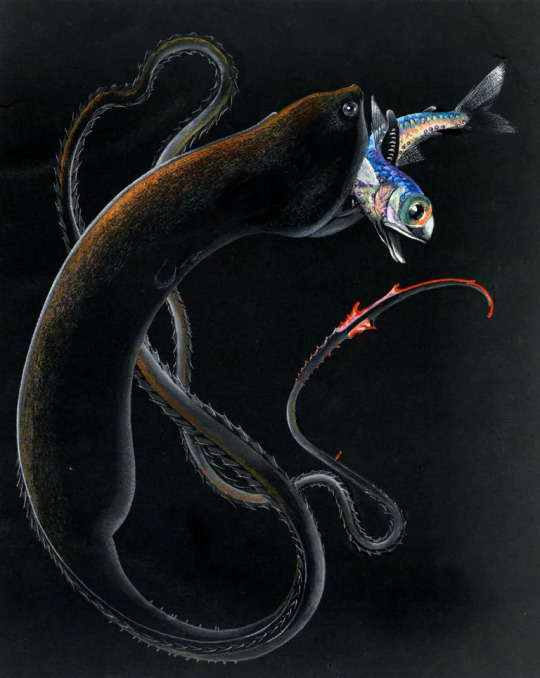
Saber-toothed viper fish attacking small ocean sunfish
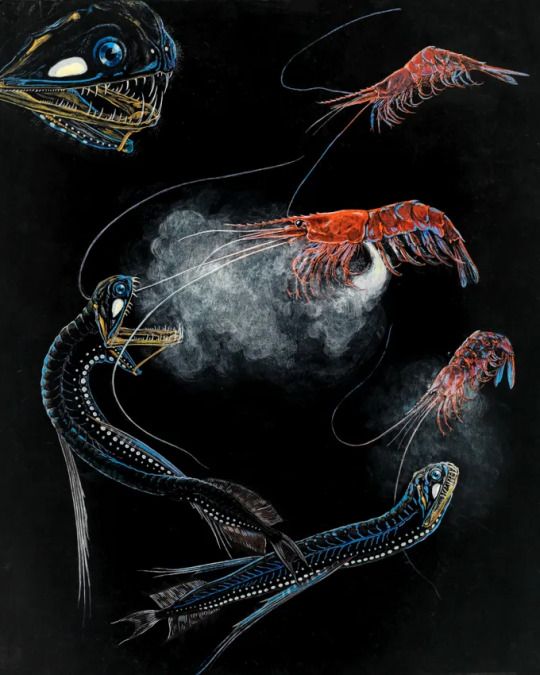
Saber-toothed viper fish approaching shrimp for attack
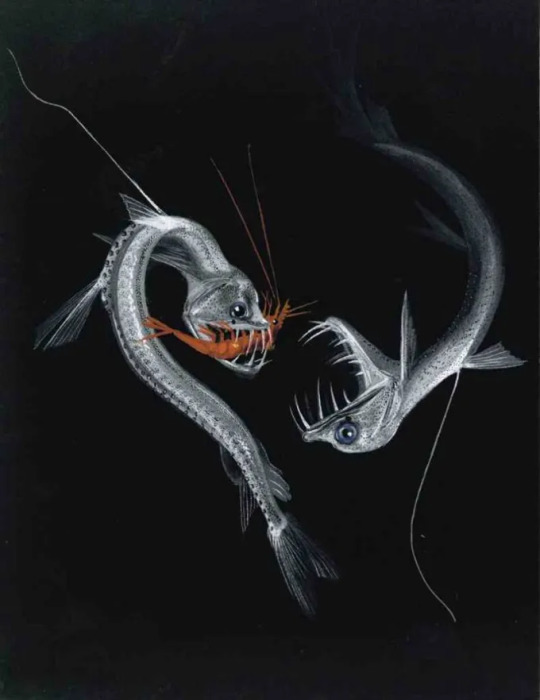
Saber-toothed viper fish attacking shrimp
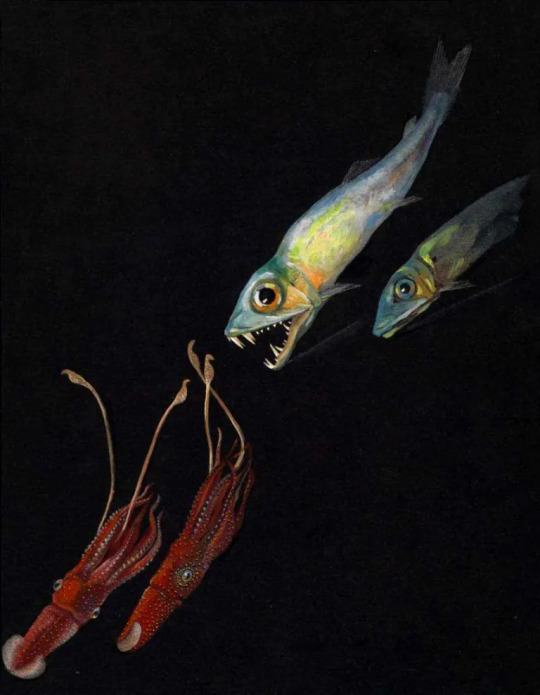
Predatory fish chasing small squid
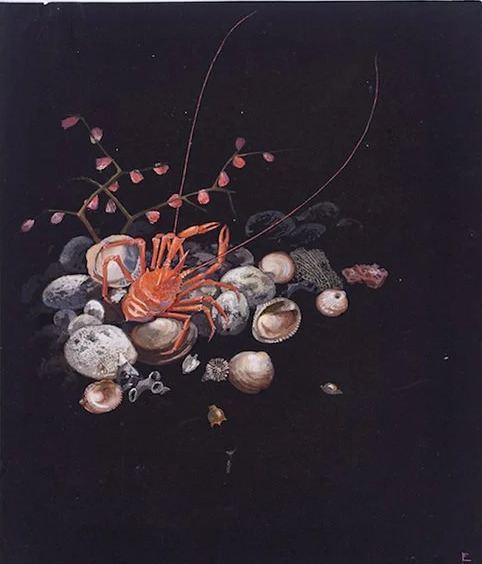
Submerged beach

Flying pelagic snails
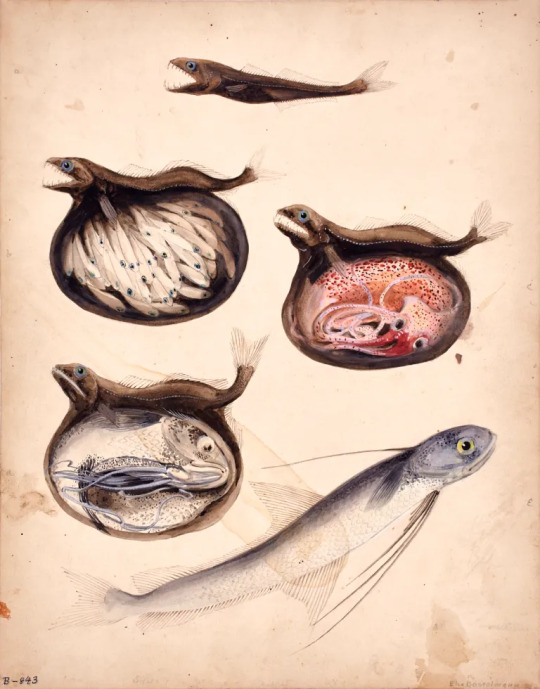
Black swallower fish with stomach contents

Bathylagus glacialis eating plankton
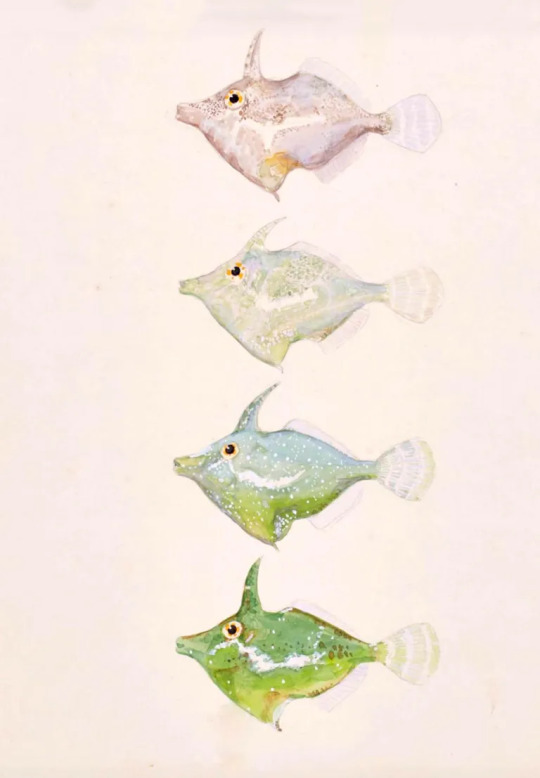
Leather fish
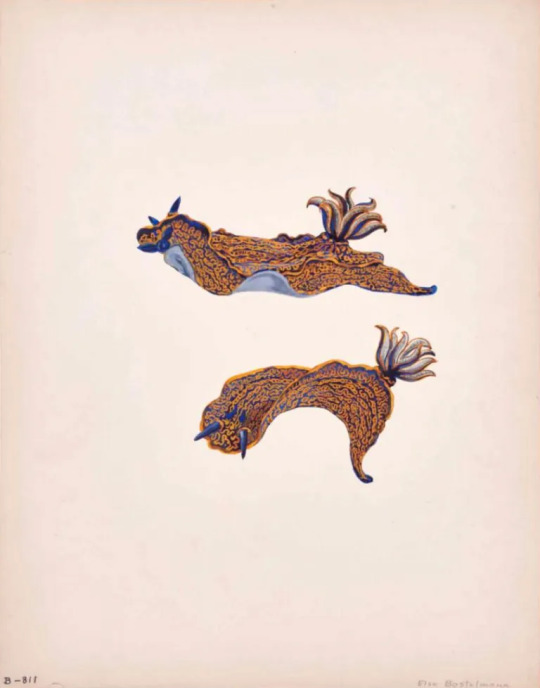
Blue and orange nudibranch
39 notes
·
View notes
Text
The operator of the venerable Bronx Zoo, one of the world's most famous wildlife parks, has apologized for two "unconscionable" racist episodes in its past, including placing an African man on display in a monkey house in 1906.
The Wildlife Conservation Society, which runs the Bronx Zoo in addition to three other zoos and an aquarium in New York City, said in a statement this week that in the "name of equality, transparency, and accountability, we must confront our organization's historic role in promoting racial injustice."
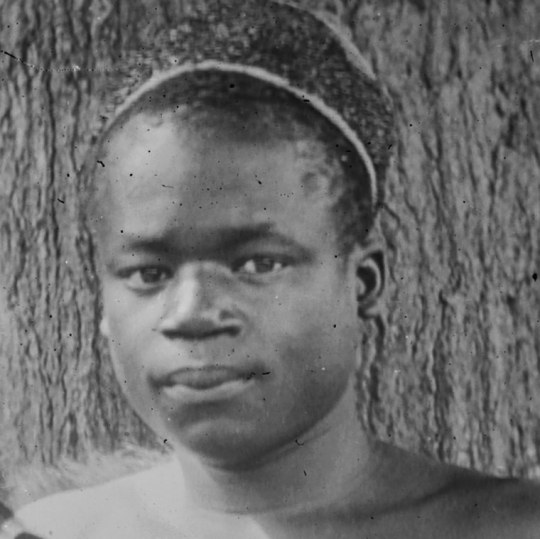
"His name was Ota Benga," the statement said. Bronx Zoo officials "put Ota Benga on display in the zoo’s Monkey House for several days during the week of September 8, 1906 before outrage from local Black ministers quickly brought the disgraceful incident to an end."
One of those ministers, the Rev. James Gordon, "arranged for Ota Benga to stay at an orphanage he directed in Weeksville, Brooklyn," the statement said. "Robbed of his humanity and unable to return home," Ota Benga died by suicide a decade later.
Harvey Blume, who co-authored the 1992 book "Ota Benga: The Pygmy At The Zoo," said the zoo's apology is too little and too late.
"And to whom was this apology? It's a little late for Ota," Blume told NBC News on Friday.
All known records about Ota Benga at the wildlife society are now being made available online as part of an effort to "publicly acknowledge the mistakes of our past," the Wildlife Conservation Society's statement said.
The organization, founded in 1895 as the New York Zoological Society, also denounced the "eugenics-based, pseudoscientific racism, writings, and philosophies" advanced by two of its founders, Madison Grant and Henry Fairfield Osborn, Sr.
Grant penned an infamous eugenics book, “The Passing of the Great Race,” with a preface by Osborn.
The book was submitted as a defense exhibit for Nazi doctor Karl Brandt, a director of the Third Reich's "euthanasia" program, and other defendants in the Nuremberg trials.
Brandt, who was also Adolf Hitler's personal physician, was convicted by the war crimes tribunal in 1947 and put to death in 1948.
"Back in that day, science and anthropology were based on explicitly racist principles," Blume said. "That there was a hierarchy of races, culminating with the white race on top, looking down."
The role once-respected scholars played in propping up debunked scientific theories to justify white supremacy has been overlooked for far too long, according to the author.
"Madison Grant was one of Hitler's favorite authors," said Blume, who co-authored "Ota Benga: The Pygmy At The Zoo" with the late Phillips Verner Bradford, grandson of the man who purchased Ota Benga in Africa and brought him to America.
"These were not Nazis, but in some ways they were too."
The wildlife society said in its statement, which was first reported by The New York Times, that it is obligated to confront these episodes.
"We deeply regret that many people and generations have been hurt by these actions or by our failure previously to publicly condemn and denounce them," the statement said.
"We recognize that overt and systemic racism persists, and our institution must play a greater role to confront it. As the United States addresses its legacy of anti-Black racism and the brutal killings that have led to mass protests around the world, we reaffirm our commitment to ensuring that social, racial, and environmental justice are deep-rooted in our conservation mission."
The organization also announced it was hiring a diversity officer to help "ensure diverse pools of candidates for recruitment, promotion, and succession planning, including our board and leadership."
"Today we challenge ourselves to do better and to never look away whenever and wherever injustice occurs," the statement said.
#Ota Benga#congo#congolese exhibited in the bronx zoo ny#bronx human zoo#human zoos in america#Bronx Zoo operator apologizes for racist display of African man in 1906#white supremacy
4 notes
·
View notes
Text
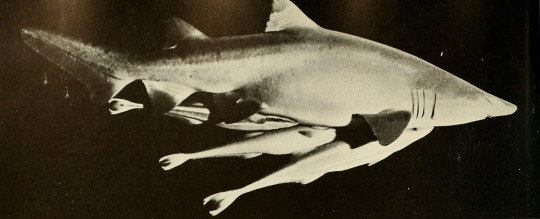
Remoras attached to a sand shark
By: New York Zoological Society
From: Natural History Magazine
1950
#sand shark#shark#cartilaginous fish#fish#remora#carangiform#1950#1950s#New York Zoological Society#Natural History Magazine
210 notes
·
View notes
Photo

For the International Day of Light, we invite you to reflect (pun intended) on this charming juvenile biography of the scientist Sir Humphry Davy (1778-1829).
Sir Humphry Davy was a Cornish chemist and inventor with quite the record of scientific achievement:
Developed electrolysis (the process of using electricity to isolate elements)
Discovered the elements barium, boron, calcium, magnesium, potassium, and sodium as well as the compounds hydrogen telluride and hydrogen phosphide
Studied and wrote about the anesthetic effects of nitrous oxide (aka “laughing gas,” a term he also coined)
Proved that diamonds are made of carbon
Served as president of the British Royal Society; inaugural chairman of the Athenaeum Club; and co-founder of the Zoological Society of London
Davy was such a formidable player in the European realm of scientific learning that despite the fact that England and France were at war at the time, Napoleon gave the Englishman special permission to visit France’s leading scientists and have an audience with Empress Marie Louise in 1813.

So what, you may ask, does Sir Humphry Davy have to do with light? In the foregoing summary of the scientist’s life, we have left out his most famous accomplishment: the Davy safety lamp.

Naturally, coal miners working in the dark depths of the earth need artificial lighting by which to do their work. The problem was in early nineteenth-century northern England, the flame of the miners’ candles kept mixing with a natural flammable gas found in the mines, known as “firedamp,” causing a series of devastating explosions that claimed the lives of hundreds of miners. Moved by the suffering of working-class families in northern England, Robert Gray, the rector of Bishopwearmouth, appealed to Davy in a letter in 1815 to develop a method of lighting mines safely. Over the next several months following this charge from the clergyman, Davy developed his famous safety lamp. The safety lamp works by enclosing a flame in a wire mesh cylinder. This cylinder disseminates the heat that would otherwise cause the flame to explode upon contact with a flammable gas.
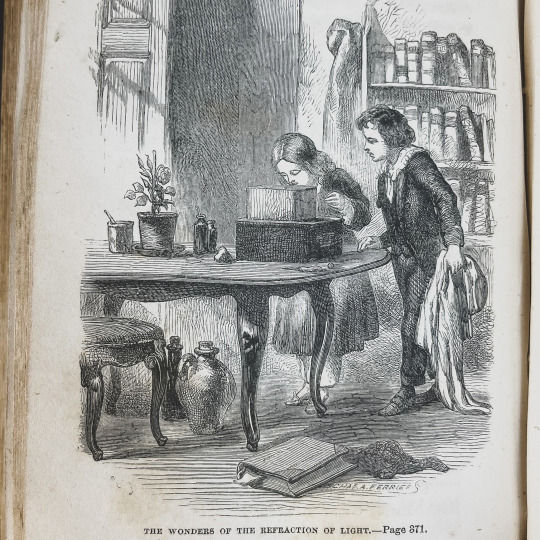
Henry Mayhew’s semi-fictionalized biography (featured here) of a young Humphry Davy uses a narrative of the chemist’s life to teach readers about the scientific properties of two things that are essential to Davy’s famous invention: heat and light. Along the way, Humphry teaches his younger sister, Kitty, about refraction and reflection and how these light phenomena can be used to trick the eye:

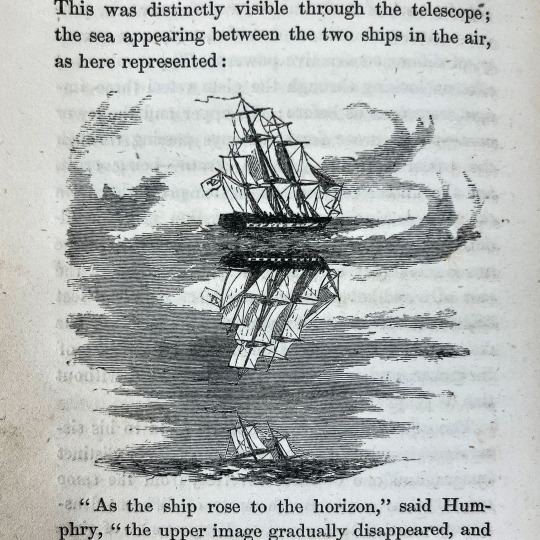
Humphry explains the role that light refraction plays in producing superior mirages. Superior mirages of ships at sea, which make vessels look like they are floating in midair, may be the origin of flying boat legends, such as the Flying Dutchman.

Humphry explains to Kitty the principles of reflection in mirrors.
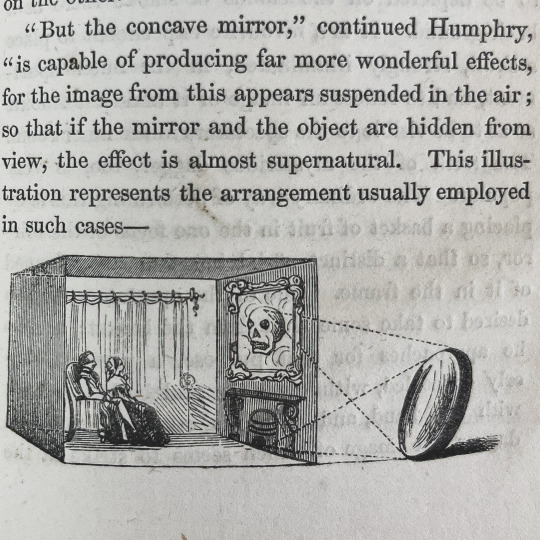
Humphry debunks a popular trick to play on people looking for a paranormal encounter:
“It is a favourite experiment to place a skull, strongly illuminated, in the outer apartment, and to reflect an image of it amid the smoke, so as to be visible to the spectators in the inner room.”
Images from:
Mayhew, Henry. The Wonders of Science, or, Young Humphry Davy. New York: Harper & Brothers, 1856.
Catalog record: https://bit.ly/3Pdk2F7
#international day of light#humphry davy#history of science#rare books#refraction#reflection#optical illusion
40 notes
·
View notes
Text
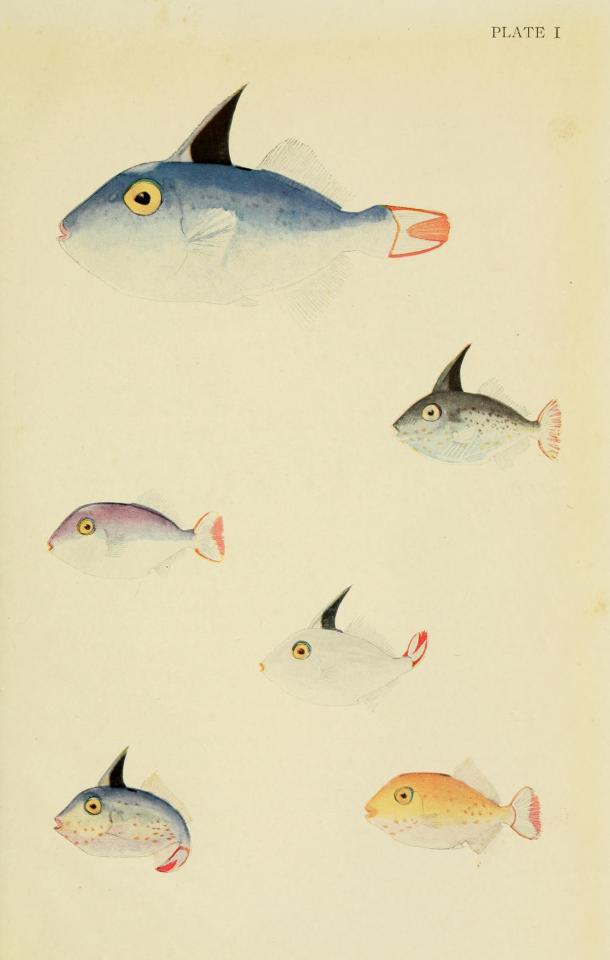
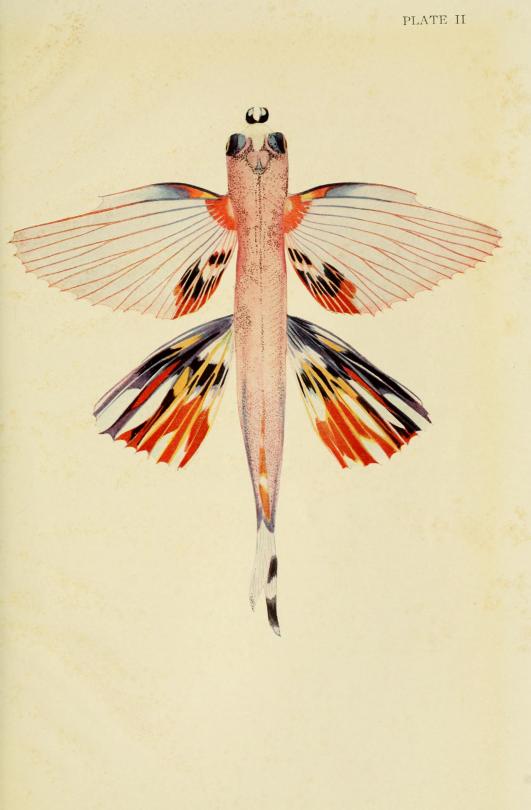
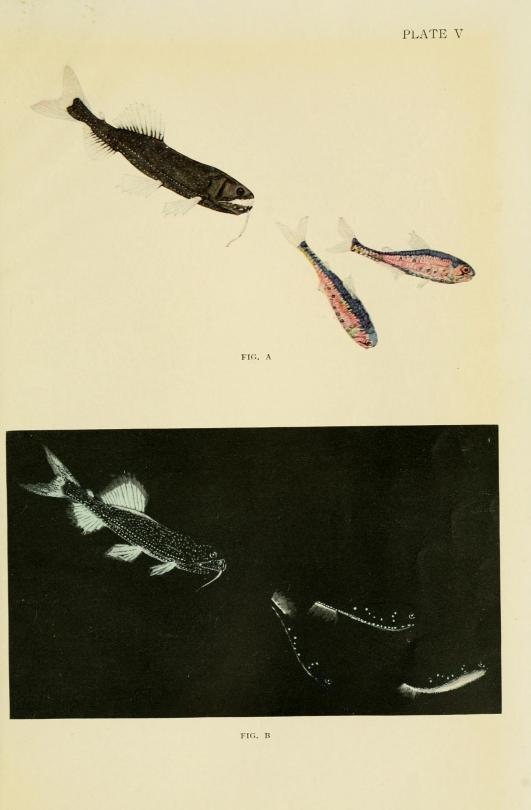
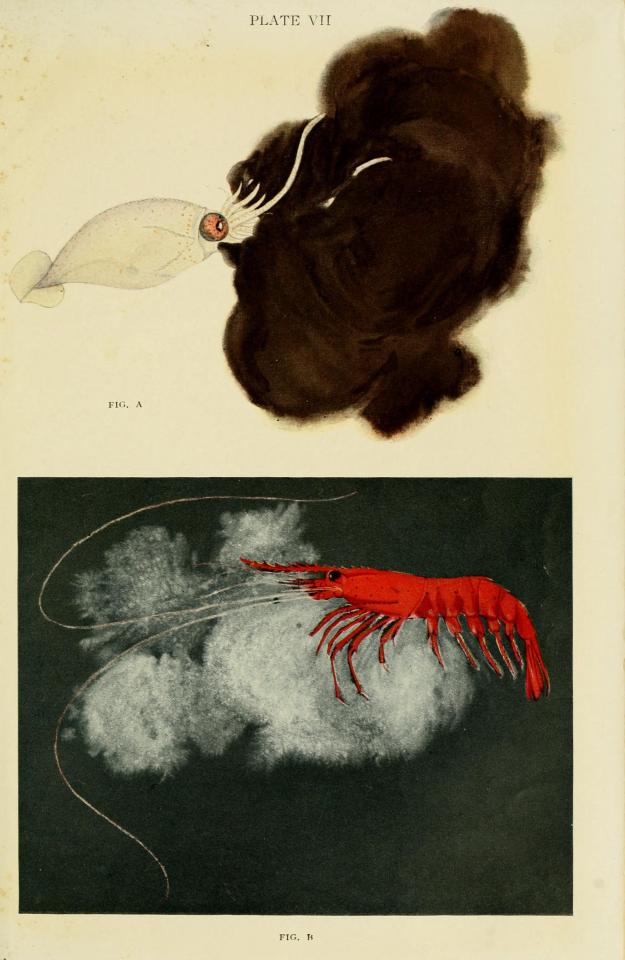
#FishyFriday Part 2: 4 more color plates (I, II, V, VII) from Arcturus adventure: an account of the New York Zoological Society's first oceanographic expedition (1926) by another female artist on the expedition, Helen Damrosch Tee-Van. (See individual photos for ID details.)
More on Helen Damrosch Tee-Van (American, 1893-1976), staff artist for the New York Zoological Association (now Wildlife Conservation Society) who participated in multiple research expeditions: https://en.wikipedia.org/wiki/Helen_Damrosch_Tee-Van
[Book digitized by Biodiversity Heritage Library]
#fish#fish in art#squid#cephalopods#crustraceans#ichthyology#marine biology#book illustration#scientific illustration#20th century#Helen Damrosch Tee-Van#New York Zoological Society#Wildlife Conservation Society#Arcturus#animals in art#Fishy Friday
24 notes
·
View notes
Text
"Identity" as a "principle" is defined as "absolute sameness in ‘all’ (‘every’) respects." It can never empirically be found in this world of ever-changing processes, nor on silent levels of our nervous systems. "Partial identity" or "identity in some respects" obviously represents only a self-contradiction in terms. Identification, as the term is used here, can be observed very low in the scale of life. It may be considered the first organic and/or organismal relating of "cause" and "effect," order, etc., when lower organisms responded effectively to signals "as if" they were actualities. On lower levels such organismal identifications have survival value.
Laboratory observations show that the amoeba will exhibit reactions to artificial stimulations, without food value, similar to its reactions to stimuli with food value. The amoeba as a living bit of protoplasm has organismally identified an artificial, valueless-as-food, laboratory stimulus with "reality." Thus, although the reaction was there, the evaluation was inappropriate, which does not change the biological fact that without such identifications, or automatic response to a stimulus, no amoeba could survive.
Advancing in the scale of life, the identifications become fewer, the identification reactions become more flexible, "proper evaluation" increases, and the animals become more and more "intelligent," etc. If identifications are found in humans, they represent only a survival of primitive reactions and mis-evaluations, or cases of underdevelopment or regression, which are pathological for humans.
Many of our daily identifications are harmless, but in principle may, and often do, lead to disastrous consequences. Here I give three examples of identification, one by a psychiatric hospital patient, another by a "normal" student of mine, and a third by a group of natives in the Belgian Congo.
When I was studying psychiatry in St. Elizabeths Hospital, a doctor was showing me a catatonic patient who was standing rigid in a corner. For years he had not spoken and did not seem to understand when spoken to. He happened to have been born and spent part of his life in Lithuania, where the people had been trained for several generations by the czar to hate the Poles. The doctor, without that historical knowledge, introduced me to the catatonic by saying, "I want you to meet one of your compatriots, also a Pole." The patient was immediately at my throat, choking me, and it took two guards to tear him away.
Another example is of a young woman who was a student in my seminar some years ago. She held a responsible position, but in her whole orientation she was pathologically fearful to the point of having daydreams of murdering her father because he did not defend her against her mother, who had beaten her and nagged her. During her childhood her brother, who was a number of years older and the favorite of their mother, patronized her, and she hated him for this attitude.
In this particular interview I was especially pleased with her progress and so I was speaking to her smilingly. Suddenly she jumped at me and began to choke me. This lasted only about five seconds. Then it turned out that she identified my smile with the patronizing attitude of her brother, and so she was choking "her brother," but it happened to be my neck.
There is another incident I want to tell you about that will indicate the problems we have to deal with (35, p. 52). We have all seen a box of Aunt Jemima Pancake Flour, with the picture of "Aunt Jemima" on the front. Dr. William Bridges of the New York Zoological Society has told this story about it: A United States planter in the Belgian Congo had some 250 natives working for him. One day the local chieftain called him and said he understood that the planter was eating natives, and that if he did not stop, the chief would order his men to stop work. The planter protested that he did not eat natives and called his cook as a witness. But the cook insisted that he did indeed eat natives, though he refused to say whether they were fried, boiled, stewed, or what not. Some weeks later the mystery was cleared up when the planter was visited by a friend from the Sudan who had had a similar experience. Between them they figured out the answer. Both had received shipments of canned goods from the United States. The cans usually bore labels with pictures of the contents, such as cherries, tomatoes, peaches, etc. So when the cooks saw labels with the picture of "Aunt Jemima," they believed that an Aunt Jemima must be inside!
- Alfred Korzybski, “The role of language in the perceptual processes” (1951)
...
“ If identifications are found in humans, they represent only a survival of primitive reactions”
i would say that they are not survival of a previous state of evaluation but the fondation, the base of further evaluation: the process of evaluative flexibility come from a sort of competition-cooperation of the indetifications, builded on their contradiction
the social evolutionist, progressist point of view of korzybski here with its typical notion of the primitive does led to quite unfortunate view in his inclusion of the third exemple
the previous exemples were case of pretty much relex attack, in the last one you have an investigation based on the not that unreasonable conclusion for someone knowing the basic about can food but not aware of the concept of advertisment figure head.
plus it’s not like the idea that colonist might be secretly eating people to be that far fetch (even ignoring the extreme violence of the congo free state’s atrocities dating back just a few generation) in a colonial world being upholded with brutalities and a racism making colonist and colonized live pretty much worlds appart figuratively speaking
3 notes
·
View notes
Text
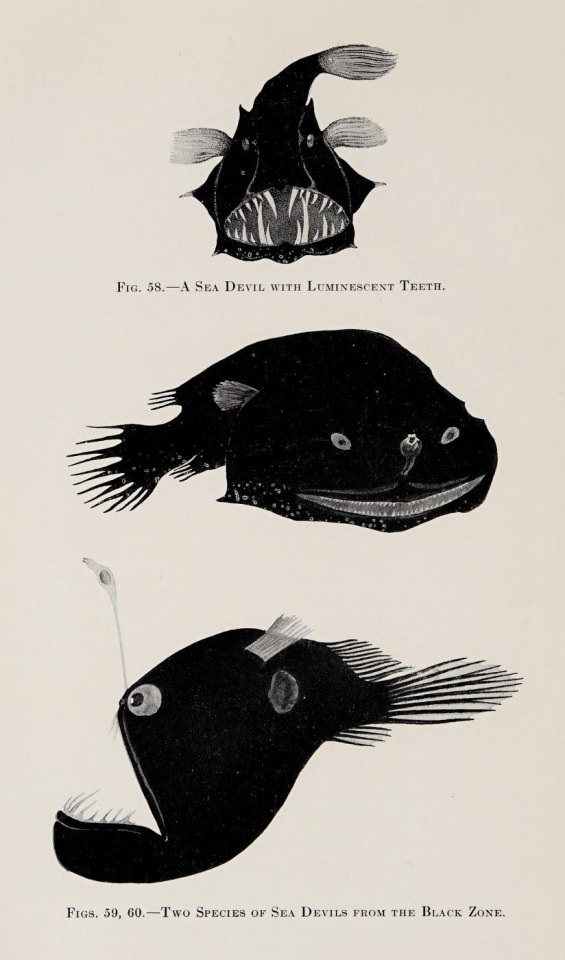
The Arcturus Adventure: an Account of the New York Zoological Society's First Oceanographic Expedition. Written by William Beebe. 1926.
Internet Archive
587 notes
·
View notes